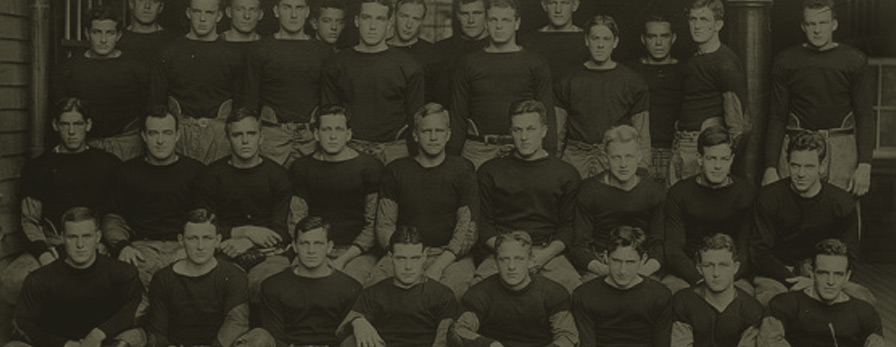 By: David P. O’Brien, J.D.
By: David P. O’Brien, J.D.
Director of the Sports Management Program at Drexel University
Given the constant scrutiny on coach compensation (especially when determining contracts for men’s and women’s coaches of the same sport, such as basketball) by the media, legislatures, and traditional college athletics constituents, this article provides athletic directors (ADs) with a primer1 for how to analyze legal compliance with the Equity Pay Act2 (Part I), what to consider when conducting an Equity Pay Act Self-Audit (Part II), and considerations for setting compensation for new coaches, including an Equity Pay Act Checklist (Part III).
PART I – Analyzing Coach Compensation for Equity Pay Act Compliance
When paying coaches in the same sport different amounts, there are four reasons, justifications, or defenses that the legal system recognizes; they form the analytical framework for how to review your program for legal compliance.
1. Revenue Production Defense
This defense is, in many cases, an illusion and not viable, particularly in sports programs whose revenue and expenses are roughly equal. Let’s take two cases. In Case 1, men’s basketball generates $10 million in revenue and incurs $5 million in expenses. In this situation, the revenue production defense is suitable, since the delta between revenue and expense is usually critical to helping the department pay for the expenses of other sports within the athletic department. In Case 2, men’s basketball generates revenue (say $1 million) and incurs expenses of roughly the same amount (i.e., $1 million). Because there is no “profit” in Case 2, there is no revenue that could be used to support the expenses of other sports within the athletic department. Accordingly, the revenue production defense is not suitable. For this defense to have real merit, a meaningful and positive differential should result between revenues and expenses of the men’s program.
2. Extra Duties Defense
Another way an institution can legally justify salary differentials using the “factor-other-than-sex” defense is to show that the men’s team coach has greater duties than the women’s team coach. Mere assertions that extra duties exist are insufficient. What are these duties, and why do they exist? Are some coaches performing these duties without being compensated? (If so, that really diminishes the strength of the argument for why one coach needs to be paid for these duties.) Have these extra duties been offered to the coach of the women’s team? Does the coach of the men’s team have a greater number of assistants or support staff to help get these extra duties handled and thereby does not require extra compensation?
When relying on this potential defense, documentation is critical. It could be the case, from a fund-raising perspective, that the head coach of the men’s team is more in demand from boosters than the head coach of the women’s team. This may result in more required appearances from the men’s coach on behalf of fund-raising projects for either the athletic department or the institution’s development office. These expectations and extra work can help legitimize compensation differentials, provided they are tangible and real, capable of articulation and quantification. Ambiguity will render this defense inadequate.
3. Greater Pressure and Responsibility Defense
A university that pays disparate coaching salaries may assert that the men’s team coach has greater pressure and responsibility than the female coach in the same sport. For example, many Division I men’s basketball coaches are expected to raise money, cultivate alumni, socialize with boosters, and be more highly visible.
Attendance at men’s games may be greater and the ticket revenue from a competitive program may be more important to the department. Corporate sponsorship revenue will often be driven by a successful men’s basketball program with high attendance and wide media coverage, which can be critical to bringing new sponsors on board. Additionally, media coverage of men’s basketball is often more intense than coverage of women’s basketball, which logically can produce more media appearances and more media scrutiny for the men’s coach.
These realities may constitute a source of additional pressure on the men’s coach; but if these factors are only a peripheral part of the coach’s employment, they will not alone justify a higher salary. Hence, an athletic department that is relying on this defense needs to be able to document it with a solid accounting of these different responsibilities and pressures.
4. Marketplace Defense
An institution may argue that the coach of the men’s team can command a higher salary in the marketplace than the coach of the women’s team can command; thus, simple economic demand requires that the men’s team coach be paid more. A university may argue that it must offer competitive compensation packages to compete for the best talent and ensure more wins and revenue.
The credibility of this marketplace defense is diminished if those charged with hiring do not inform themselves of the actual market rates of particular expertise, experience, or skills. Additionally, how credible is this defense if there was no real bargaining over initial salaries?
For this defense to work, a university must document its research of the marketplace and its negotiation of the compensation package. Simply awarding high salaries out of a perception of what it will take to hire a coach is not sufficient. Bona fide negotiation must take place and be documented. Simply awarding high salaries out of a perception, not supported by objective facts, of what it takes to hire a coach is insufficient for this defense to be successful.
PART II – Equity Pay Act Self-Audit
Knowing the four principle defenses, it is a best practice for athletic departments to periodically (once every 1-3 years) conduct a pay equity audit concerning the compensation of its coaches.3 Outlined below are some practical and legal tips that will help guide ADs through the review process.
1. Look at the EADA Report
Begin by looking at the last few Equity in Athletics Data Analysis (EADA) reports. Look at the average salaries of the head and assistant coaches for the men’s and the women’s teams. Although the reports do not factor in the gender of the coach, this public information provides a starting point for review. For more precise source compensation information, the Win AD coaches and administrators database provides an additional resource. Finally, look at the internal worksheets used in preparing this summary information to ensure accuracy.
2. Collect Employment Documents
Compile for review an employment contract, letter of hire or appointment, or other type of hiring document for every coach. Also, gather annual notices regarding current salary and benefits for every coach. This process will reveal the following information: coaches who have employment contracts versus other hiring arrangements, duration of contracts, compensation and benefits packages, bonus eligibility, and terms and conditions of employment.
3. Check Job Descriptions
If the coaches’ duties are not set forth in the employment contract or letter of appointment, or other relevant documents, obtain copies of the job descriptions for the positions. Even if the duties are briefly discussed, it is advisable to obtain and review the formal job descriptions versus the appointment document.
4. Understand Compensation Information
Ask the payroll office to provide a record of all compensation paid to the coaches. This should provide a comprehensive and easy-to-read report that is useful in identifying potential issues of inequity.
5. Understand Supplemental Compensation
Gather information on the amounts being paid for benefits such as: health, life, and disability insurance. Also gather information on bonuses, annuities, courtesy cars, club memberships, tickets to games and events, and any other miscellaneous forms of compensation.
6. Understand Outside Compensation
Some compensation may not come directly from the institution. If such compensation is referenced in the employment contract, it needs to be considered. Ascertain what separate contracts the coach may have or may be negotiating with outside entities such as apparel or footwear manufacturers.
7. Understand Why Inequities Exist
If inequities exist, the next step is to ascertain why they exist and if they can be justified. As you go through the process of determining if compensation is equitable, remember that the mere assertions that extra duties somehow justify a disparity in pay are not enough. You must ask follow-up questions.
8. Involve Human Resources and General Counsel
Input from the Human Resource Office and the Legal Office is required for any review. The Human Resource Office can compile much of the payroll and necessary personnel documents. The Legal Office may want the review performed under its direction so it can control access to information generated for the review and protect the information under the attorney-client privilege. For that reason, it is always best to check with the Legal Office before initiating a review of this kind.
Part III – Setting Compensation for New Coaches
It is always easier to deal with compensation issues on a prospective basis. Athletic administrators should consider the following points when establishing compensation levels for new coaches:
- Ensure that base salaries are comparable among similarly situated coaches. Variations are permissible for training, experience, education, and success.
- Make supplemental salary categories available to both male and female coaches. But compensation may differ depending on documented factors such as revenue production disparities, responsibilities, record expectations and resulting pressure differences, and marketplace influences.
- Ensure coaches are not paid twice for the same job responsibility (e.g., media responsibilities, academic standards).
- Be precise in defining supplemental duties of the coach, and document that performance is actually taking place.
- Negotiate each area of compensation with your coach and document all conversations and demands.
- Assess coaching, administrative, and support staffs that are available for coaches before determining that extra compensation is necessary.
- Do not allow coaches to sign contracts directly with any commercial organizations when they involve the use of student-athletes or the university marks (e.g., shoes, apparel, or equipment). Contracts should be with the university or athletic department. Negotiations will then determine how the revenue involved is split between the institution and coach.
Pay equity concerns are prevalent throughout numerous institutions. A proactive review of any pay equity issue will correct real, or perceived, inequities before they become legal disputes.
On the next page is a checklist that will allow you to systematically review the compensation levels within your department for compliance with pay equity requirements.
Equity Pay Act Checklist
- EADA Report
- USA Today Coaching Database
- Win AD Database for Coaches and Administrators
- Hiring/Employment Documents
- Job Descriptions
- Compensation and Benefits Information
- Hiring File
- Recruitment/Selection Process
- Marketplace Analysis
- Competing Offers
2. Analysis of Job(s)
- Degree of Skill
- Experience
- Head Coach
- Assistant Coach
- Other Relevant Experience
- Sales, Marketing, Administration, Management, etc.
- Education
- Bachelor Level
- Advanced Level
- Specific Area of Expertise
- Specialized Training
- Longevity/Seniority at the University
- Head Coach
- Assistant Coach
- Other Positions
- Degree of Effort
- Physical
- Mental
- Intensity
- Quantitative and Qualitative
- Degree of Responsibility within the Position
- Core Coaching Responsibilities
- Other Responsibilities
- Responsibility for Student-Athletes
- Size of Team
iv. Responsibility for Staff
- Size of Staff
- Assistants
- Medical/Trainer Staff
- Academic Support Staff
- Operations Staff
- Administrative Support Staff
- Other Support Personnel
- Supervisory Oversight
v. Responsibility for Program
- Program Operations
- Productivity
- Wins/Losses
- Conference Success
- Tournament Success
- Regional Success
- National Success
- Expectations
- Revenue Generation
- Ticket Sales
- Television/Radio-Related Income
- Venue Advertising Revenue
- Program-Related Donations
- Athletics Department–Related Donations
- University Donations
- Conference/Post-Season Success/Revenue
- Impact of Success or Failure on Other Athletic Department Operations and University
- Public Relations
- Accessibility to Media
- Speaking Engagements
- Appearances for Program
- Appearances for University
- Role in Alumni Relations
- Role with Key Donors
- Role in Community Relations
- Numbers of Appearances for Each Category
- Media Coverage
- Program Related
- University Related
- As Expert in Coaching Field
- For Other Civic and Charitable Endeavors
- Recruiting Responsibilities
- Geographic Territory
- Number of Recruits/Size of Program
- Facilities Oversight/Responsibility
3. Marketplace Value
- Establishment of True Marketplace Value
- Compensation/Market Analysis
- Other Comparable University Packages
- Competing Offers
- Negotiation History
- University Salaries
- Conference Salaries
- Retention-Based Increases to Compensation Level
4. Contract
- Type
- Term
- Restrictions on Termination
- Limitations on Future Employment
- Penalties for Early Termination
5. Analyze Compiled Data
- Use of Spreadsheet
Key Insights
Documentation is crucial for athletic administrators when attempting to legally justify paying coaches in the same sport different amounts. Written evidence can be the difference between clearly substantiating one coach has extra duties or greater pressure and thus merits higher pay—or facing an uphill battle in proving pay equity compliance.




